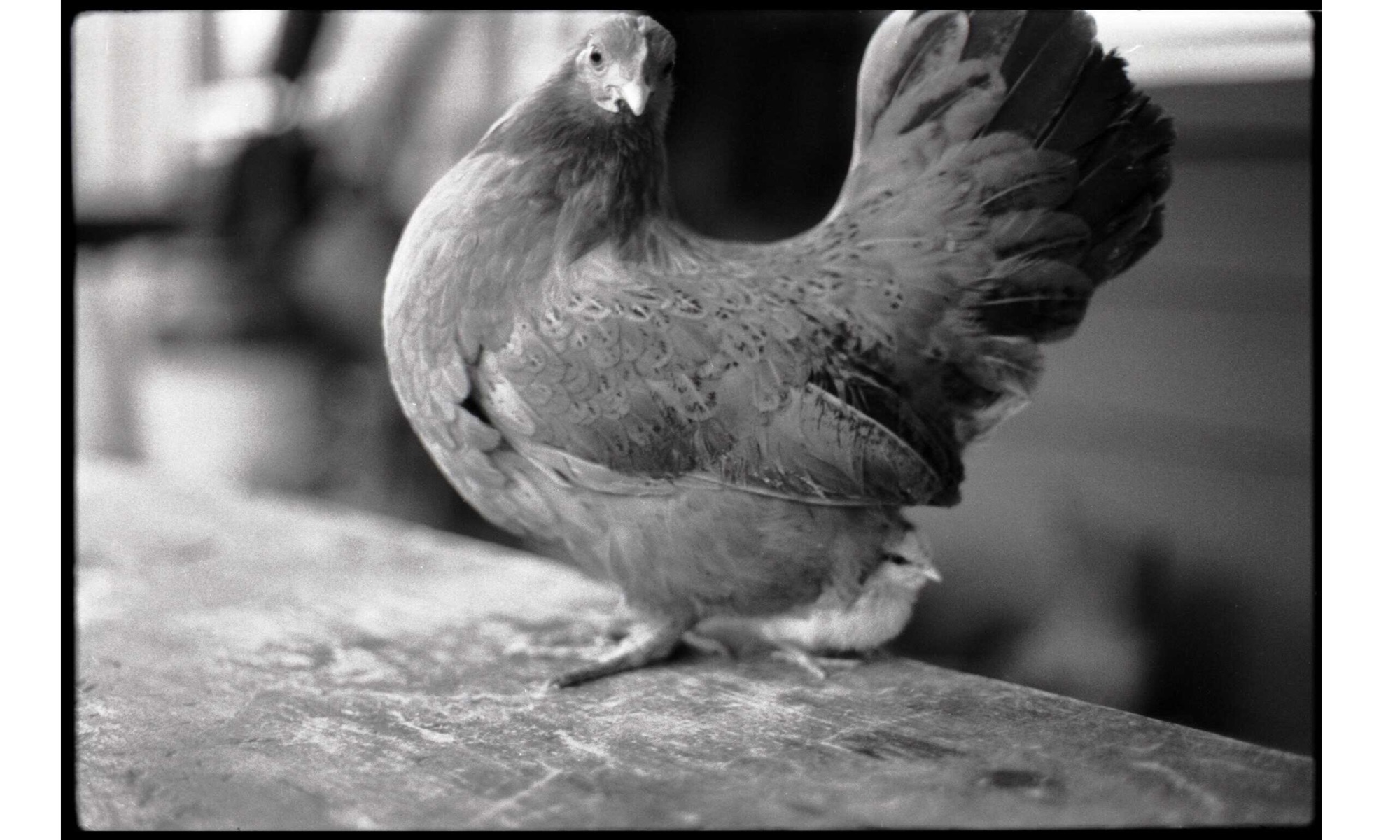In an effort to answer a simple question, Who’s your favorite X-Man, I found myself going down a wormhole of research (what else have I got to do while socially isolating?) to create my ranked list of all 108 X-Men. (There are actually a few more, but I left of the ones I knew nothing about.) So I’m now ready to answer the question by posting my Top 20 X-Men of the moment, starting off with #’s 20 – 17.
20. Wolfsbane – Rahne Sinclair
First appearance, New Mutants original graphic novel, September 1982
Creators: Chris Claremont, Bob McLeod
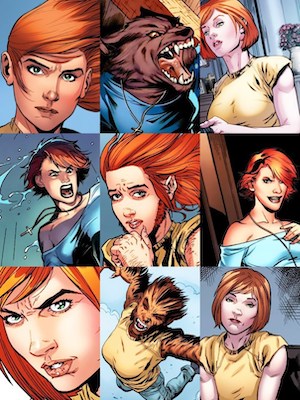 Basically, Wolfsbane is your classic, repressed, Catholic schoolgirl who just happens to also be a werewolf. Born and raised in Scotland by an abusive pastor ( who she later discovers is her biological father; her mother was a prostitute) Rahne had religion beaten into her. When her mutant powers emerged in adolescence, the Pastor attempted to have her burned at the stake. Nice, Dad. Wolfsbane has the ability to transform into a wolf, and also a transitional human/wolf form, similar to a werewolf.
Basically, Wolfsbane is your classic, repressed, Catholic schoolgirl who just happens to also be a werewolf. Born and raised in Scotland by an abusive pastor ( who she later discovers is her biological father; her mother was a prostitute) Rahne had religion beaten into her. When her mutant powers emerged in adolescence, the Pastor attempted to have her burned at the stake. Nice, Dad. Wolfsbane has the ability to transform into a wolf, and also a transitional human/wolf form, similar to a werewolf.
Why is she on this list? In the early years, Rahne was sweet, innocent, and loving. Fiercely protective of her friends, fearful and judgmental of anyone who ran afoul of her strict Catholic upbringing. The juxtaposition of her powers – the unleashing of the beast within her, made for some nice creative tension. She was also visually striking, with her short cropped, bright red-hair and diminutive frame. In more recent years, Rahne’s background and personality has undergone many changes, become more unnecessarily complicated (as is the case with most comic book characters), which probably keeps her from appearing higher on this list.
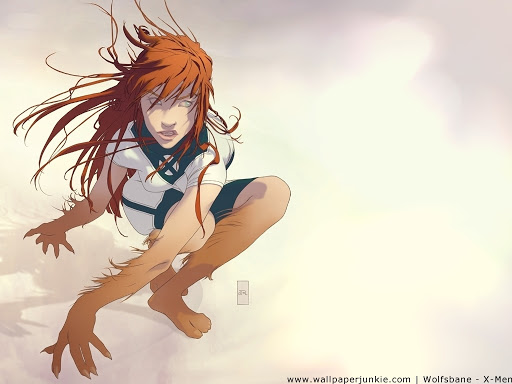
19. Dazzler – Alison Blaire
First appearance, X-Men #130, February 1980
Creators: Marvel Comics, John Romita Jr., Tom DeFalco, Louise Simonson, Roger Stern
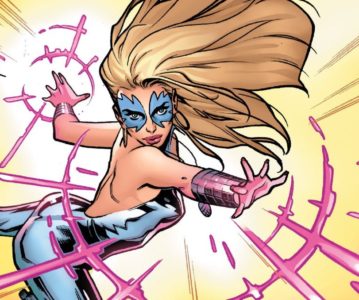 Conceived in the late 1970’s, when disco was booming, Marvel wanted to create a comic book superhero who would capitalize on that genre’s popularity and cross over into the music industry. Dazzler (originally called Disco Dazzler) would be introduced into the X-Men as a disco-singing mutant, but Marvel would also release an album by “Dazzler” out here in the real world. It’s a shame disco came crashing down around the same time Dazzler made her debut in The X-Men.
Conceived in the late 1970’s, when disco was booming, Marvel wanted to create a comic book superhero who would capitalize on that genre’s popularity and cross over into the music industry. Dazzler (originally called Disco Dazzler) would be introduced into the X-Men as a disco-singing mutant, but Marvel would also release an album by “Dazzler” out here in the real world. It’s a shame disco came crashing down around the same time Dazzler made her debut in The X-Men.
Of course, Marvel was pretty serious about pushing their new creation, premiering her in the middle of what is widely thought of now as the most influential and important X-Men arc – The Dark Phoenix saga. Despite being introduced in the X-Men comic, Dazzler refused membership, as she was working on a career as a performing artist. She returned to star in her own comic that ran for 42 issues, and ended with an original graphic novel Dazzler: the Movie. After her solo title was cancelled, she became an X-Man, and finished out the 80’s with the mutant team. She was pretty unused throughout the 90’s and early 2000’s, but returned in Excalibur (the X-Men’s British team) and has been appearing semi-regularly ever since.
Dazzler’s mutant power grants her the ability to convert sound to light, in an array of forms, from lasers to holograms. She is also known for her ability to “dazzle” people, emitting lights in soothing, hypnotic, pulsing patterns that mesmerize anyone watching. Her mutant powers emerged when she was an adolescent, performing at school, when various light effects began to manifest around her. The audience assumed these effects were technologically generated. This use of her power, and mistaken assumption continued throughout her professional career.
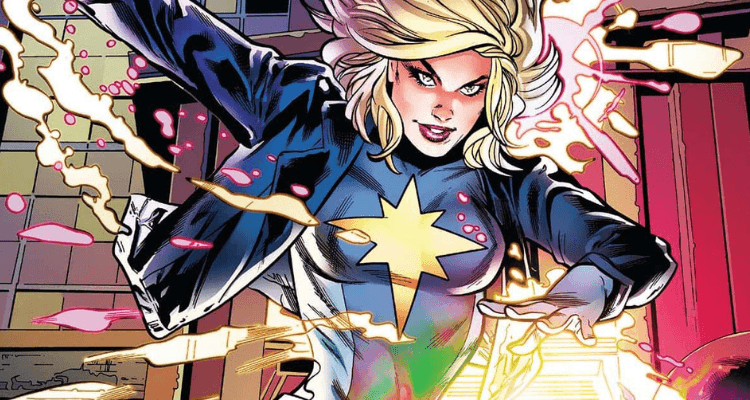
Why is she on this list? Dazzler (minus the disco) was a pretty cool concept. Her powers were visually appealing, and despite her uncertainty at the start of her super-hero career, she was a pretty powerful woman in comics.. still something of a rarity in the early 1980’s. (Although thanks to Chris Claremont, that was changing). Her early journey was fun to watch as she tried her best to stay the course as a performing artist and not get sucked into the life of a crime-fighting, villain-battling superheroine. Dazzler as floundered a bit in recent years, going through a rock & roll phase, an adult contemporary phase, and most recently a goth/punk phase, and her personality tended to shift with each new version of the character. Still, she’s a long-lived character that started out as a gimmick, and she’s proven to have some staying power.
18. Siryn (Banshee) – Theresa Rourke Cassidy
First appearance, Spider-Woman #37 (1981)
Creators: Chris Claremont, Steve Leialoha
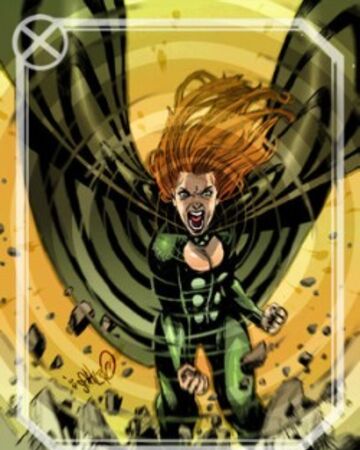 Another Chris Claremont creation (you’ll see a lot of those) first showing up in, of all places, Spider-Woman. Claremont’s Spider-woman run was pretty fantastic, and the introduction of Siryn as a villain, working for Black Tom and Juggernaut was fun. Siryn was Sean Cassidy’s (Banshee, my #24 X-men) estranged daughter, and had the same abilities. Banshee’s wife, Maeve, gave birth while Banshee was deep undercover working for Interpol, and died soon after in an IRA bombing. Theresa fell under the care of Sean’s cousin Tom. Upon his return, he is so devastated by his wife’s death he blames Tom for not taking better care of this wife, and after injuring him in a fight, the two become estranged and Sean flies off before he learns about his daughter’s existence.
Another Chris Claremont creation (you’ll see a lot of those) first showing up in, of all places, Spider-Woman. Claremont’s Spider-woman run was pretty fantastic, and the introduction of Siryn as a villain, working for Black Tom and Juggernaut was fun. Siryn was Sean Cassidy’s (Banshee, my #24 X-men) estranged daughter, and had the same abilities. Banshee’s wife, Maeve, gave birth while Banshee was deep undercover working for Interpol, and died soon after in an IRA bombing. Theresa fell under the care of Sean’s cousin Tom. Upon his return, he is so devastated by his wife’s death he blames Tom for not taking better care of this wife, and after injuring him in a fight, the two become estranged and Sean flies off before he learns about his daughter’s existence.
When Tom embarks on a career as a villain, Siryn acts as his apprentice, thus putting her into conflict with Spider-woman. After her defeat and capture, she eventually is reunited with her father, reforms, and begins her long career as an X-Man, becoming a core member, and eventually leader of X-Force, the paramilitary branch of the X-Men franchise, of which I was not a fan. It wasn’t until Siryn joined X-Factor, under the deft pen of writer Peter David, that Siryn developed into the complex and fascinating character I grew to enjoy. Siryn’s character comes to a rather unusual end when she comes into conflict with the Celtic goddess, The Morrigan. Ultimately, Theresa leans that The Morrigan has become tired of being a goddess and in exchange for the goddesses’ help, Theresa takes on the mantle of The Morrigan, and goes off to do whatever goddesses’ do.
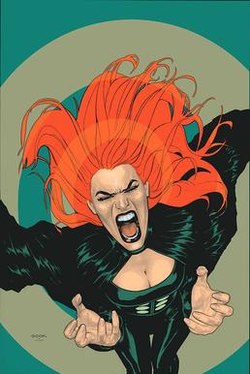 Siryn’s possesses sonic powers, similar to her father’s. Through the use of high-decibel “sonic screams” Siryn can produce a variety of effects, from causing her opponents pain, to producing a devastating “sonic lance” that strikes with concussive force. Her manipulation of sonics allows her to fly, and by modulating her vocalizations, she can use her voice to manipulate people, similar to the Siren’s of myth.
Siryn’s possesses sonic powers, similar to her father’s. Through the use of high-decibel “sonic screams” Siryn can produce a variety of effects, from causing her opponents pain, to producing a devastating “sonic lance” that strikes with concussive force. Her manipulation of sonics allows her to fly, and by modulating her vocalizations, she can use her voice to manipulate people, similar to the Siren’s of myth.
Why is she on this list? I’ve always enjoyed characters with sonic powers, for one, and Banshee was always a character I enjoyed. Siryn has a nice visual presence, and through the work of Peter David, she became a complex, powerful superheroine, with strengths and weaknesses who was a lot of fun to read. I’d like to see her return sometime, minus her Morrigan aspect, in a well-written role.
17. Cecilia Reyes (no alter ego)
First appearance, X-Men #65 (1997)
Creators: Scott Lobdell, Carlos Pacheco
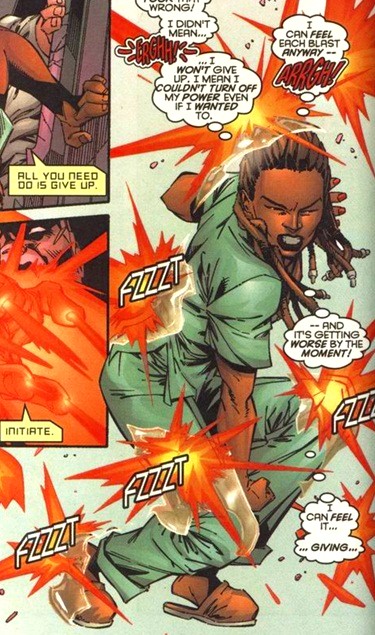 Cecilia Reyes is a rather unusual X-Man, as she was introduced as, and more uniquely, remains to this day, a very reluctant hero who would rather be tending her patients that getting involved in superheroics. Puerto Rican born, and raised in the Bronx, there hasn’t been a lot of exploration, to my knowledge, of Cecilia’s early days, or even her origin. All that is known is that as a child, her father was gunned down before her, and her inability to help him spurred her on to become a doctor, which she did, specializing in trauma surgery. When her mutant powers appeared, she did reach out to Professor Xavier who made an offer for her to join the X-Men at his School for Gifted Youngsters. She turned him down and ask that he keep her existence a secret.
Cecilia Reyes is a rather unusual X-Man, as she was introduced as, and more uniquely, remains to this day, a very reluctant hero who would rather be tending her patients that getting involved in superheroics. Puerto Rican born, and raised in the Bronx, there hasn’t been a lot of exploration, to my knowledge, of Cecilia’s early days, or even her origin. All that is known is that as a child, her father was gunned down before her, and her inability to help him spurred her on to become a doctor, which she did, specializing in trauma surgery. When her mutant powers appeared, she did reach out to Professor Xavier who made an offer for her to join the X-Men at his School for Gifted Youngsters. She turned him down and ask that he keep her existence a secret.
Cecilia first encountered the X-Men when she was targeted by a government-backed anti-mutant task force. She evaded capture with the help of some X-Men and joined them on this single adventure, but refused to join them, seeking to live a normal life. Later she was called upon to safe Cyclops from nanotech that was embedded deep within his body. Upon his recovery he offered, and she accepted, honorary membership onto the team. After just a handful of adventures, she left to start her own medical practice, reaffirming that the heroic life just wasn’t for her. Cecilia made a handful of appearances in the years that followed, often being called upon to help wounded X-Men until finally rejoining the Astonishing X-Men line-up in 2012 under the writing hand of Marjorie Liu. She has continued to appear sporadically in the Xbooks in subsequent years.
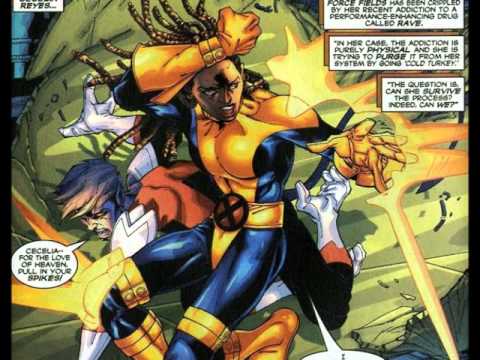 Cecilia’s powers are largely defensive. She constantly emits an invisible”bioplasmic field,” extending six inches away from any part of her body, which increases her durability. The field take on a glass-like translucency when subconsciously activated by a threat. The bio-field is an extension of Cecilia’s body, and so she feels the attack as its effect is dispersed over the field. It protects her from harm whether she wants it to or not, or is aware of the incoming threat or not. Eventually Cecilia learned how to manifest the field at will, as a weapon. Surrounding her fists with psioplasmic force can increase the bludgeoning power behind her punches. She can also form spikes or expel the field outward like a hurled hammer.
Cecilia’s powers are largely defensive. She constantly emits an invisible”bioplasmic field,” extending six inches away from any part of her body, which increases her durability. The field take on a glass-like translucency when subconsciously activated by a threat. The bio-field is an extension of Cecilia’s body, and so she feels the attack as its effect is dispersed over the field. It protects her from harm whether she wants it to or not, or is aware of the incoming threat or not. Eventually Cecilia learned how to manifest the field at will, as a weapon. Surrounding her fists with psioplasmic force can increase the bludgeoning power behind her punches. She can also form spikes or expel the field outward like a hurled hammer.
Why is she on this list? Cecilia is one of those character I find very intriguing and would love to see a writer take a liking to her and really explore her potential. Her reluctance to be a hero, her skill as a surgeon, and her largely defensive powers make her fairly unique in the world of superheroics, and as Puerto Rican woman, it’s always nice to have a little more diversity. I enjoyed her in Marjorie Liu’s run of The Astonishing X-Men, but would love to see more of her.
